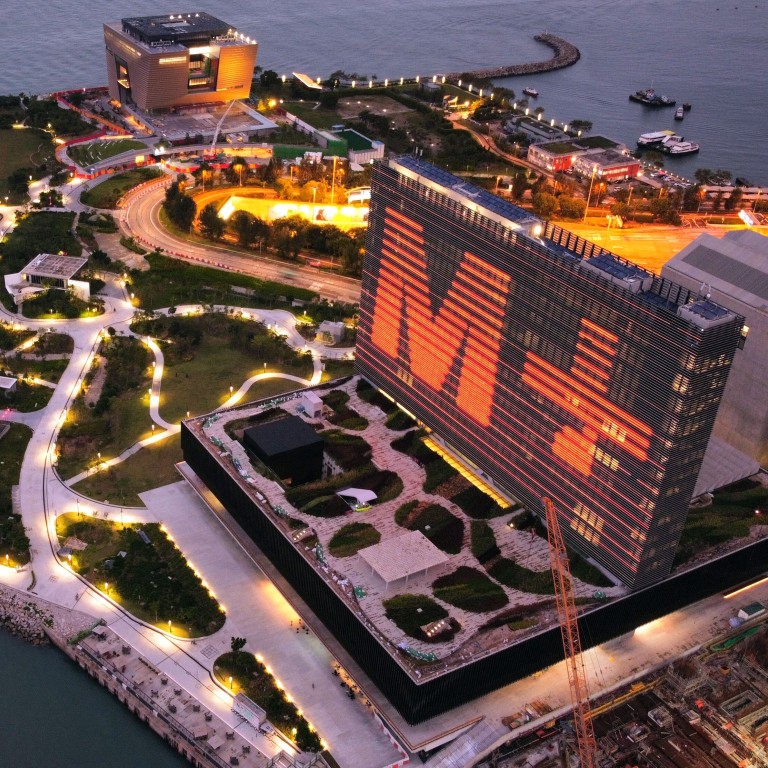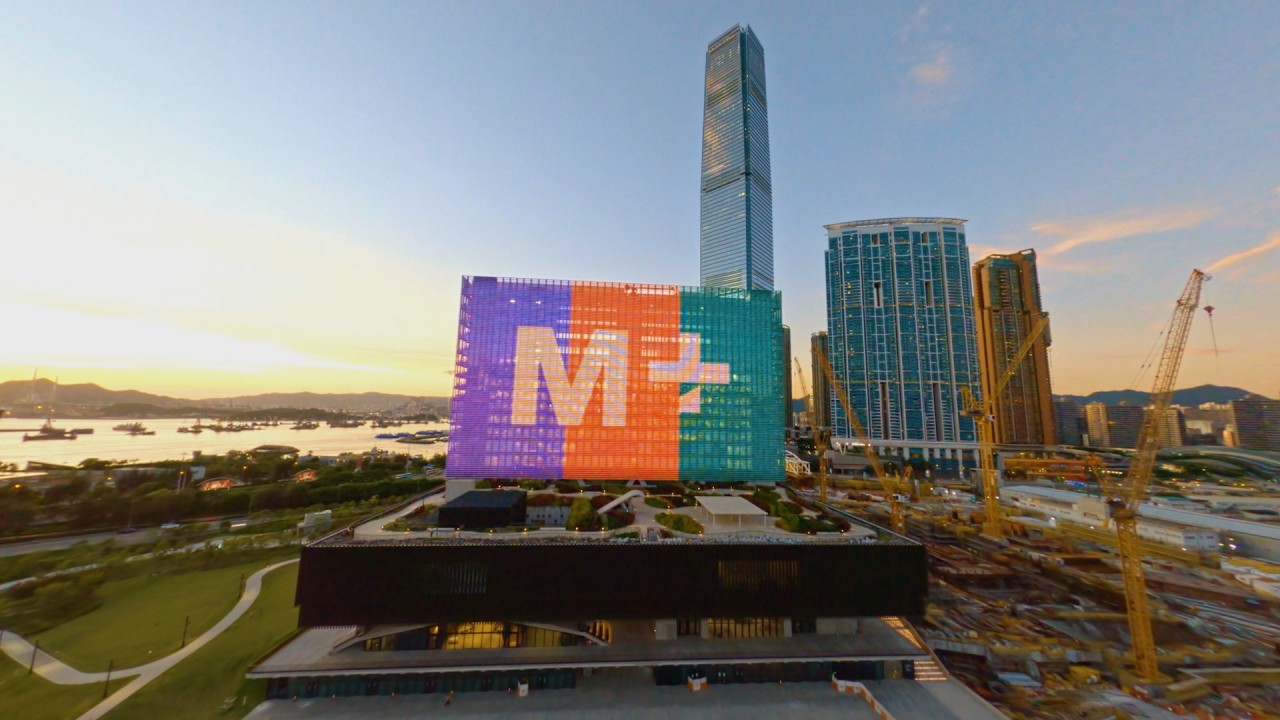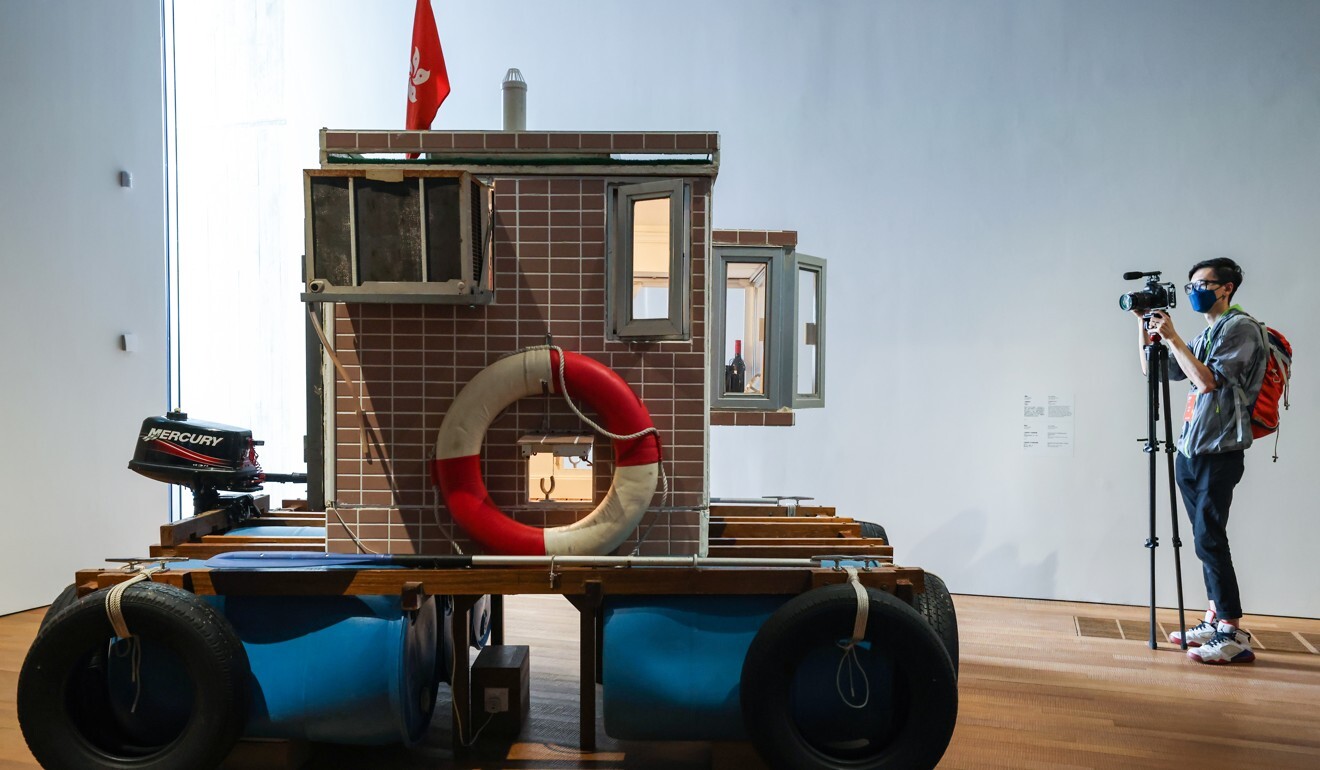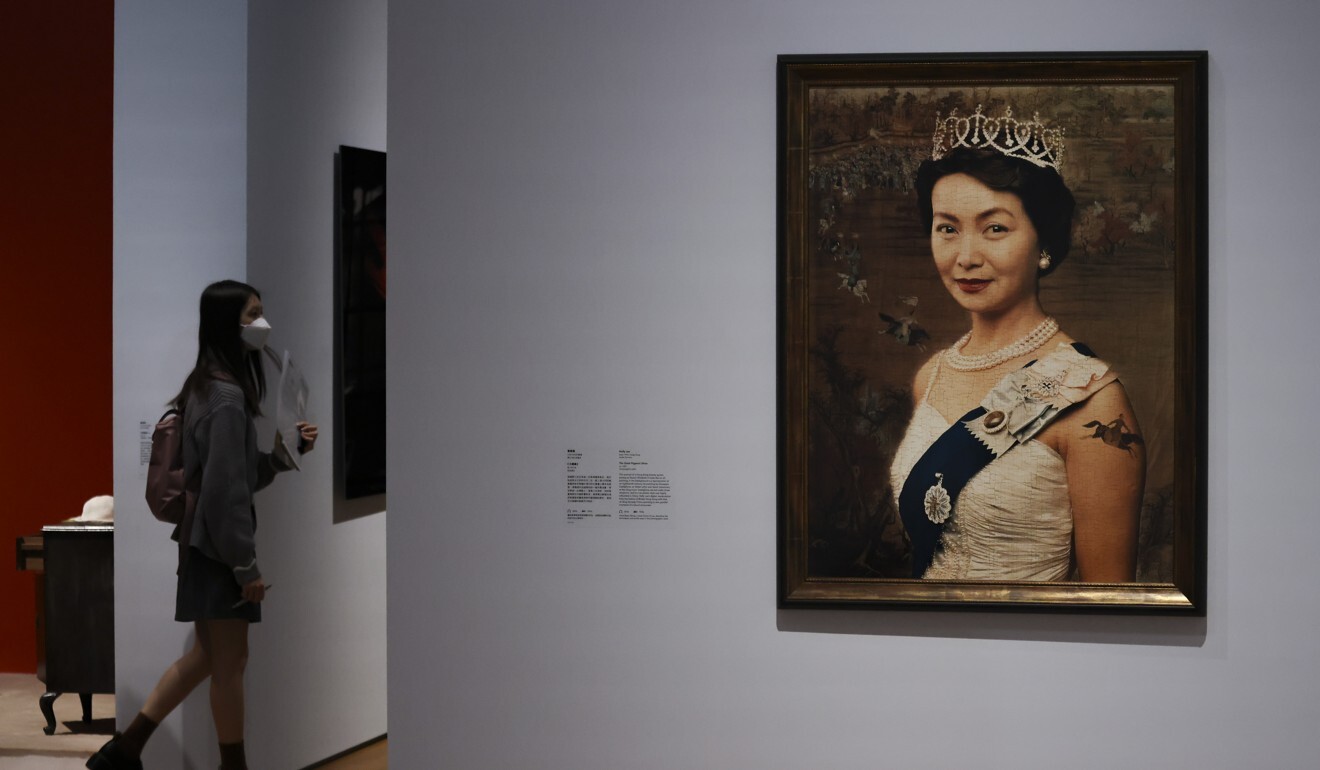
Exhibition at Hong Kong’s newest museum deals with social issues, but national security law not a factor in choosing artwork, curator says
- M+ museum will open six galleries to the public on November 12, though only the Hong Kong exhibit was made available for a media preview
- Tina Pang says exhibit deals with social issues but none of the displays have been modified
Tina Pang Yee-wan dismissed suggestions any display had to be modified or left out, saying many works of art within the collection at the new M+ museum had been inspired by the pressing social issues of their time, and dealt with them in a vibrant and visual way.
The total cost of the massive concrete structure – designed by Swiss architectural firm Herzog & de Meuron, the firm behind the Tate Modern in London and the Bird’s Nest stadium in Beijing – remains undisclosed, but M+ has already warned the final bill will exceed its initial budget of HK$5.9 billion (US$760 million).
Storm over M+ sparks fear Beijing is targeting Hong Kong’s art scene
The first indication of how much freedom the museum’s curators have will come next month, when the Hong Kong: Here and Beyond exhibition opens in the main hall. A collection of more than 200 items, the display showcases the city’s uniqueness through its visual art, architecture, design and moving images, dating from 1960 through the 2000s.
A work by the contemporary visual artist and political activist Kacey Wong, who is in self-imposed exile in Taiwan seeking “greater artistic freedom” after the imposition of the security law, also features in the exhibit.
The curator of visual culture, who was born and raised in Britain and joined the museum in 2014, said the implementation of the security law had “not made a difference to our work”, and she did not see it as a threat.
“We are a very big museum and [there are] a lot of different collection areas,” Pang said. “We have a lot of curators working on acquisitions. I do not foresee any changes in how we are acquiring things.”
Pang also noted the museum would “not break the law”.

02:22
Incredible drone fly-through of Hong Kong's new art museum, M+
A spokesman for the West Kowloon Cultural District said M+, as a public museum, would both comply with the law and maintain a high level of professional integrity.
The museum’s collection, he added, was “based on research and academic rigour”, while its staff adopted “a professional, objective and impartial attitude in curating exhibitions”.
Pang pointed out that many social issues were touched on in the collection, including the leftist riots in 1967, the handover to China in 1997, the influx of Vietnam war refugees and the city’s long-standing housing problem.
“It [remains] true that the artists were those who stood at the forefront reflecting the social problems at the time,” she said, adding that some of the messages conveyed were not as direct as others.
The main hall will be the one of the first open to invited guests for a preview tour on Saturday, before a total of six ready for the grand opening to the public on November 12.
The Post was recently given a glimpse of the new Hong Kong exhibition, which includes a nostalgia-inducing wooden gate set into a green wall that greets visitors when they first step into the gallery. The gate is covered with the familiar calligraphy of the late “King of Kowloon”, Tsang Tsou-choi, whose distinctive work adorns surfaces across the city.
Local painter Lui Shou-kwan’s abstract 1968 Zen work There Were No Methods in Antiquity is also on display.

To capture the Canto-pop phenomenon of the 1980s there is also a display of album covers, theatre posters and film clips featuring the likes of Anita Mui Yim-fong and Lesley Cheung Kwok-wing, allowing visitors to explore how popular culture has shaped their view of the city.
“I think it is important to understand what has happened in the past, so that we know how to contextualise what we have encountered now,” Pang said.
While the vast majority of the works in the exhibit may appeal to older residents, fewer may be familiar to those under the age of 21.
Pang acknowledged the collection was not “very contemporary”, and said it would take time for curators to catch up with the new forms and mediums of the vibrant visual culture Hong Kong’s younger generation grew up in.
The exhibition will, however, display some more recent pieces that it acquired – whether through commissions or loans – in an effort to bring its collection up to date.

One is Kacey Wong’s 2009 piece, Paddling Home, a tiny 4 sq ft building resembling a flat sat on a raft. The home has bay windows, an air-conditioning unit and a stainless steel gate, as well as two oars which can be pushed out from the walls allowing it to be paddled away.
The piece was inspired by Hongkongers’ tiny flats – whose mortgages they spend most of their lives repaying – and raises questions about alternative ways to live, while toying with the notions of freedom and the search for a better life.
Despite Wong being a familiar face at pro-democracy rallies, Pang said she had not felt any pressure to modify his work, and had only updated the label that listed his location.
Another newer acquisition steps into the world of animation with a video installation from last year by Kong Khong-chang, a comic artist known as Kongkee.
The work is presented as a kaleidoscopic infinity mirror room, accompanied by a soundscape designed by Choi Sai-ho, who was inspired by the city’s noises.

“I hope people will feel that there is something in the exhibition that is relevant to their lives,” Pang said. “The building of the museum took a lot of time … There are lots of things, because we are doing all the foundation work, which is very necessary when you are building a new collection.
“There are lots of contemporary mediums and issues, such as environmental sustainability, redressing the imbalance, especially in architecture and design, of a lack of female presentation, lots of issues like these that we are beginning to turn to [after the opening].”
The exhibition, which is broken into four chapters – “Here”, “Identities”, “Places” and “Beyond” – is expected to last for one year starting from November 12.
To mark the museum’s opening, admission fees will be waived for one year from the date of the opening for residents.

